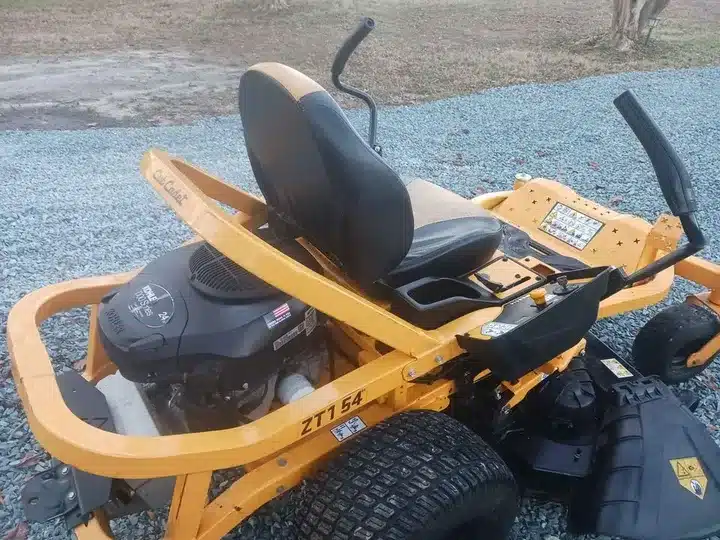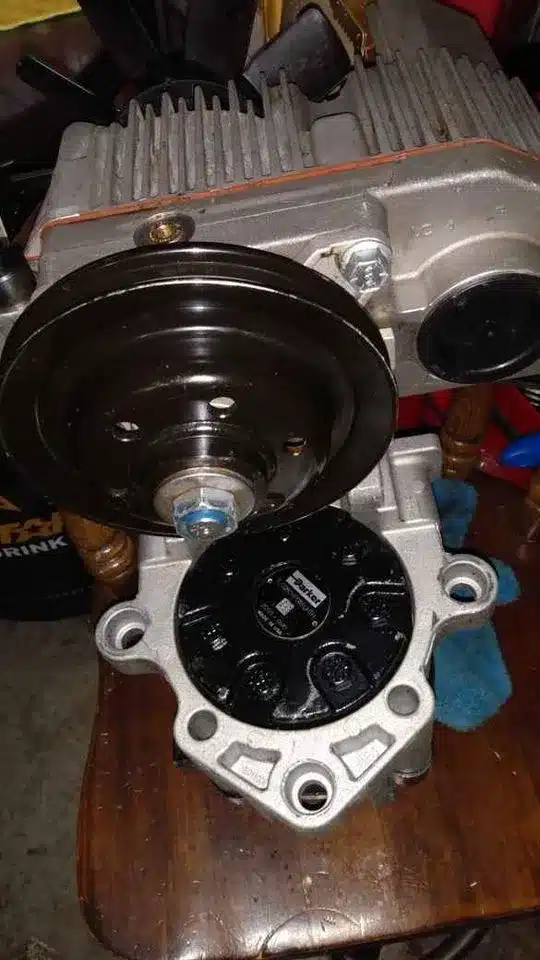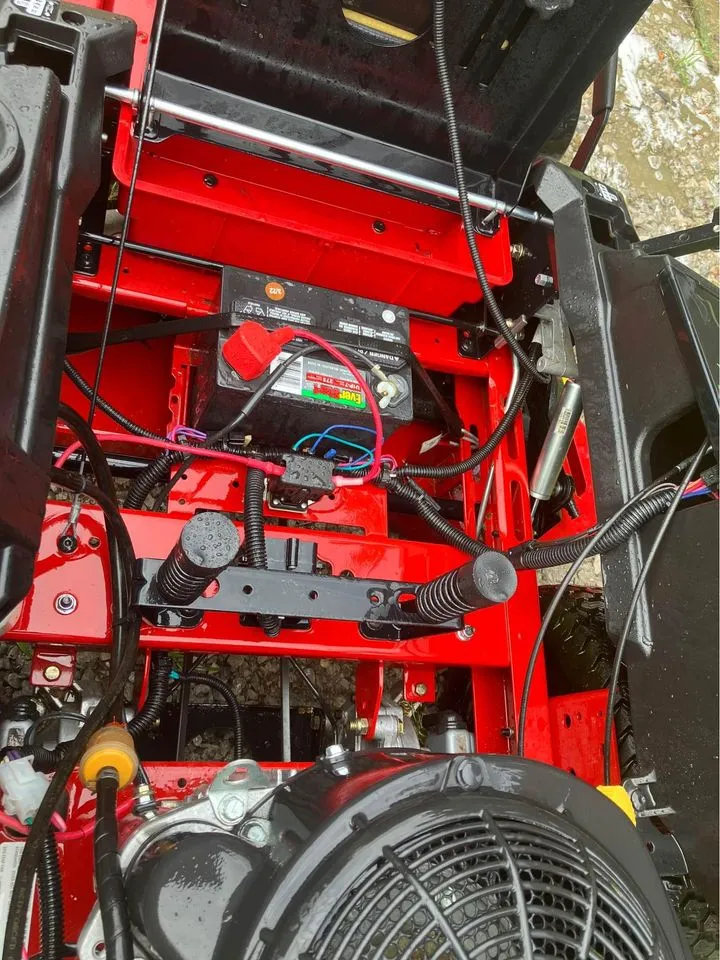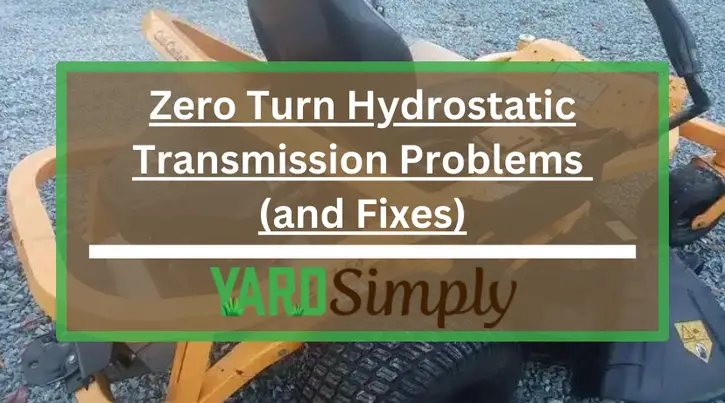When dealing with zero turn hydrostatic transmission problems, it’s essential to have guidance from a knowledgeable expert. I bring years of hands-on experience in diagnosing and repairing these complex systems, ensuring your mower operates at its best.
In this article, I will share actionable advice and proven solutions to common issues, from addressing slipping drive belts to resolving hydrostatic motor disconnections.
Trust in my expertise as we delve into the effective strategies that will keep your mower running smoothly without unnecessary jargon or filler content.
Continue reading to find practical tips and insights that will help you quickly get back to maintaining your lawn with ease.
Quick Summary
- Addressing zero turn hydrostatic transmission problems involves regular maintenance, proper fluid use, and attentive troubleshooting of issues like slipping drive belts and motor disconnections.
- Effective solutions include hydraulic system purging, regular transmission system inspections, and updating hydraulics and steering fluid to ensure optimal mower performance.
- A significant percentage of lawn mower repairs are due to neglected transmission maintenance, highlighting the importance of regular upkeep.
- In my experience, investing time and effort in routine care for your mower’s transmission significantly enhances its reliability and extends its operational lifespan.
Challenges with Zero Turn Mower Hydrostatic Transmissions
I’ve run into my fair share of headaches with zero turn mower hydrostatic transmissions. Whether it’s a slipping drive belt or a hydrostatic motor coming loose, these issues can really throw a wrench in your mowing routine.
Let’s not even get started on the mess that insufficient oil pressure or damaged hydraulic hoses can cause.
Related Posts:
Slipping Drive Belt Issues
One common challenge that zero turn mower owners encounter with hydrostatic transmissions is a slipping drive belt.
I’ve learned that belt maintenance is crucial to prevent this issue. Proper tension adjustment is necessary to keep the belt from slipping off the pulley.
I always ensure that the pulleys are aligned correctly; misalignment can cause the belt to wear unevenly and slip. Material wear is another factor I keep an eye on. Over time, belts can stretch and deteriorate, which means they’ll need replacing.
To avoid unexpected downtime, I perform seasonal checks before the mowing season kicks in. A quick inspection can save me from the hassle of a belt failure during peak mowing times.
Also Read: How to Replace Belt on Husqvarna Zero Turn Mower
Hydrostatic Motor Disconnections
While maintaining the drive belt is crucial for smooth operation, another challenge with zero turn hydrostatic transmissions is the occasional disconnection of the hydrostatic motor, which can lead to a loss of power and control.
In my experience, motor troubleshooting is a critical skill to swiftly address these issues. I’ve learned that regular connection maintenance is essential to prevent unexpected downtime.
Diligently performing harness checks can reveal loose or damaged wires that might otherwise go unnoticed.
Electrical diagnostics are also a cornerstone of my maintenance routine to ensure all systems are interacting correctly.
Additionally, I always verify the safety interlocks are functioning properly because they’re designed to prevent accidents. Neglecting these steps can turn a small issue into a significant problem.
Insufficient Oil Pressure
Inadequate oil pressure in zero turn mower hydrostatic transmissions can cause sluggish performance and hasten wear on crucial components. If oil viscosity isn’t matched to the temperature conditions, it can be too thick or thin, impacting pressure.
I’ve learned that high viscosity oil resists flow, while low viscosity may not maintain sufficient pressure, especially under high loads.
Temperature effects are notable; in cold weather, oil thickens, reducing flow. Conversely, when it’s hot, oil may become too thin, risking damage.
Regularly checking the reservoir level is vital – too little oil leads to low pressure, compromising transmission operation.
Pressure relief valves can malfunction, causing pressure to drop, while a filter blockage restricts oil flow, exacerbating pressure issues. It’s essential to address these promptly to avoid long-term damage.
Pump and Motor Internal Complications

Moving beyond issues of oil pressure, pump and motor internal complications significantly affect the reliability and efficiency of zero turn mower hydrostatic transmissions.
Internal wear is a prime culprit; it gradually reduces the performance as the components inside the pump and motor lose their precision. Seal degradation exacerbates the problem, allowing fluid to leak and air to contaminate the system.
The temperature effects shouldn’t be underestimated either. Excessive heat can warp components and further degrade seals, while cold can make fluids more viscous, straining the system.
And speaking of fluids, contaminated fluid is a real issue – it can introduce abrasive particles that accelerate wear and tear.
Lastly, bearing failures can occur, often signaling a cascade of related issues. Keeping an eye on these internal factors is critical for maintaining a functional hydrostatic transmission.
Damage to Hydraulic Hoses and Seals
Hydraulic hoses and seals are the lifelines of zero turn mower hydrostatic transmissions, yet they’re often the first to suffer damage from regular wear and tear.
I’ve learned that vigilant leak detection is key to preventing major issues. It’s not just about spotting the leaks, but understanding seal compatibility is crucial for effective repairs.
I’m meticulous with hose maintenance, knowing that a compromised hose can spell disaster for my mower’s performance. I also can’t ignore temperature effects; extreme heat or cold can wreak havoc on the system’s integrity.
And then there’s contaminant buildup – a silent menace that can degrade hoses and seals over time.
I make sure to keep the hydraulic fluid clean and the system free of debris to maintain optimal function.
Recommended Solutions
I’ve encountered a fair share of frustrations with hydrostatic transmissions, but I’ve also learned a few effective fixes.
Hydraulic System Purging

To tackle hydrostatic transmission issues in zero turn mowers, purging the hydraulic system is often an effective solution.
When I’m dealing with persistent hydraulic noise or performance hiccups, it’s usually a sign that air has crept into the system, likely due to low fluid levels or thermal expansion.
Air contamination can wreak havoc, causing erratic operation and even potential damage to the mower.
- Employ Precise Purging Techniques: Utilize specific methods designed to remove unwanted air from the mower’s system.
- Follow Manufacturer’s Instructions: Adhere closely to the guidelines provided by the mower’s manufacturer.
- Ensure Level Surface: Before beginning, make sure the mower is positioned on a flat and level surface.
- Check and Top Off Fluid Levels: Inspect the mower’s fluid levels and refill as necessary.
- Run System Through Movements: Operate the mower through a series of movements to expel any air trapped in the system.
- Straightforward Fix: Recognize that this method is a simple yet effective way to enhance the mower’s performance.
Regular Transmission System Inspections
Regular checks of the transmission system can prevent many common issues with zero turn hydrostatic transmissions. I’m always on top of transmission maintenance because it’s crucial for avoiding big headaches down the road.
I perform diagnostic checks to catch problems before they worsen. Monitoring fluid levels is a key part of my routine; it’s simple but vital for smooth operation.
- Conduct Thorough Wear Assessment: Regularly examine the mower to identify parts that are showing signs of wear and may be close to failing.
- Proactive Replacement of Parts: Replace parts that are nearing the end of their lifespan proactively, instead of waiting for them to break down.
- Adhere to Recommended Service Schedule: Follow the service schedule recommended by the manufacturer as a guide for maintaining the mower’s performance. Ensure timely care for the transmission and other critical components as specified in the schedule.
Updating Hydraulics and Steering Fluid
Ensuring your zero turn mower operates at peak efficiency involves periodically updating the hydraulics and steering fluid. Through regular maintenance, I prevent hydraulic troubleshooting headaches.
Fluid compatibility is crucial; I always check the manufacturer’s recommendations before adding new fluid to avoid potential damage.
My maintenance frequency is consistent—usually aligned with the mower’s usage patterns and the onset of extreme temperatures, which can impact fluid viscosity.
I also don’t overlook filter replacement. A clogged filter can cause numerous problems, and timely replacements support the overall health of the hydraulic system.
By keeping an eye on these factors and updating fluids and filters as needed, I ensure my mower’s hydraulics and steering remain responsive and reliable throughout their service life.
Related Article: Husqvarna Zero Turn Hydraulic Fluid Change: Tips and How To
Hydraulic System Overheating
Overheating is a significant issue for zero turn hydrostatic transmissions. This problem often arises from prolonged use of the mower, which can cause the transmission system to overheat and eventually get damaged.
To mitigate this, it is crucial to allow the engine and transmission time to cool down before operating the mower again.
Furthermore, overheating can be exacerbated by insufficient fluid levels in the transmission, so ensuring the correct amount of fluid is essential for preventing this issue.
Regular checks of the fluid level and allowing the system to cool down are practical steps to prevent overheating complications in zero turn mowers.
Electrical Control Issues

Electrical problems can significantly affect the functioning of hydrostatic transmissions in zero turn mowers. Issues may arise from a faulty control panel or starter, damaged wires, loose connections, or a problematic alternator.
These electrical issues can lead to transmission problems, including erratic mower behavior or failure to start.
Diagnosing such issues requires a thorough inspection of the electrical system, including checking for any visible damage to wires, ensuring all connections are secure, and testing the functionality of the starter and alternator.
Addressing these electrical components is crucial for the overall health and functionality of the mower’s transmission system.
Tracking Adjustment
When a zero turn mower does not drive straight or steer correctly, often pulling to one side, it could be due to an issue with tracking adjustment.
This problem can stem from unequal tire pressures, air trapped in the hydraulic system, or improperly adjusted speed control bolts. Regularly checking and balancing tire pressure on both sides of the mower is essential.
Additionally, purging air from the hydraulic system can help resolve steering issues.
Adjusting the tracking involves changing the rotation speed of the tires to ensure even movement, which can be done following the guidelines in the mower’s operator’s manual.
Pump and Motor Internal Mechanism Issues
Identifying and resolving internal issues in the pump or motor of a hydrostatic transmission can be challenging.
These internal problems are not immediately apparent from the outside and often require the hydro system to be removed and opened for a detailed inspection.
The internal components, including various seals, bearings, and gears, can wear out or become damaged, leading to transmission failure.
It’s crucial to approach these repairs with caution to avoid voiding warranties and to seek professional assistance for an accurate diagnosis and repair.
Regular inspections by a certified technician can help catch these issues early and prevent more significant problems.
Preventive Maintenance Advice
Establishing a routine maintenance schedule is vital for the longevity and efficiency of zero-turn hydrostatic transmissions. Regular maintenance helps in the early detection of potential issues, preventing them from escalating into major problems.
Key maintenance tasks include checking and replacing hydraulic fluid and filters, inspecting belts and pulleys for wear, and ensuring all connections and seals are tight and in good condition.
Testing the mower after maintenance is crucial to ensure it operates efficiently. A well-maintained hydrostatic drive should deliver consistent power and performance, reducing the likelihood of breakdowns and extending the life of the mower.
Our Verdict
In my journey with best zero turn mowers, I’ve learned that handling hydrostatic transmission issues can be quite a task, but it’s certainly manageable with the right approach.
Regular maintenance, attentive use of appropriate fluids, and staying vigilant for any unusual mower behavior are key. In my experience, such proactive measures have significantly enhanced the performance and longevity of my mower.
I’ve faced a few challenges along the way, but each problem has taught me valuable lessons.
Remember, if you’re ever in doubt, consulting the manual or seeking expert advice is a wise move. Keeping your mower in top shape might require effort, but believe me, the smooth rides are worth it!
Frequently Asked Questions
How does ambient temperature affect the performance of a zero turn hydrostatic transmission, and should I take any special precautions in extreme weather conditions?
Ambient impact can cause performance fluctuations in machinery. In temperature extremes, I’ll take weather precautions and make seasonal adjustments to maintain optimal function and prevent any operational issues.
Can I use third-party or aftermarket parts to repair my zero turn mower’s hydrostatic transmission, or must I use parts provided by the original manufacturer?
I’m considering aftermarket parts for repairs due to cost savings, but I’m wary of warranty implications and potential installation challenges. It’s essential to assess compatibility and performance reliability before making a decision.
How do I properly dispose of or recycle the hydrostatic transmission fluid after changing it from my zero turn mower?
I’m ensuring environmental responsibility by researching local regulations on fluid disposal. I’ll safely handle and take the old transmission fluid to recycling centers that accept it, keeping our planet clean.
What are the signs that indicate the hydrostatic transmission fluid in my zero turn mower is contaminated and needs to be replaced?
I’ve noticed transmission hesitation, erratic movement, fluid discoloration, reduced speed, and strange noises, which all suggest my mower’s hydrostatic transmission fluid is contaminated and urgently needs changing.
Is it possible to upgrade the hydrostatic transmission on an older zero turn mower to a more advanced or efficient model, and what are the potential benefits and drawbacks?
I’m considering an upgrade to my mower’s transmission. I’ll weigh the feasibility, compatibility, and conduct a cost-benefit analysis to assess mechanical improvements and potential upgrade challenges before making a decision.


